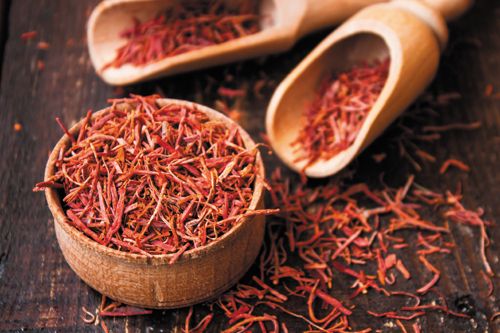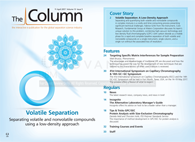Identifying Fraudulent Saffron Using UHPLC–HRMS/MS and Metabolomics
Researchers from the University of Chemistry and Technology in Prague, Czech Republic, have developed a saffron authentication process based on ultrahigh-performance liquid chromatography coupled to high resolution tandem mass spectrometry (UHPLC–HRMS/MS) and multivariate data analysis.
Photo Credit: YulliaHolovchenko/Shutterstock.com

Researchers from the University of Chemistry and Technology in Prague, Czech Republic, have developed a saffron authentication process based on ultrahigh-performance liquid chromatography coupled to high resolution tandem mass spectrometry (UHPLC–HRMS/MS) and multivariate data analysis (1).
As one of the oldest and most expensive spices, saffron is a very enticing target for fraudulent activities. Rare and exotic with a complex production process that varies considerably dependent upon the production region, small amounts of saffron can be sold for a high price. In particular, Spanish saffron is highly sought after, a problem highlighted in the 2011 “saffron scandal”, which revealed that barely one percent of saffron labelled as “Spanish” was actually grown in Spain (2). Other types of saffron are also susceptible with a recent review identifying saffron as the fourth most commonly fraudulent food stuff (3).
Identifying the geographical origin of saffron has commonly been carried out through target analysis of a specific marker such as amino acids (4) or utilized stable isotope analysis (5), however, none of these methods employed a metabolomics approach and as such they relied on a generic extraction procedure. The aim of the current research was to investigate the suitability of metabolic fingerprinting using UHPLC–HRMS/MS to authenticate saffron sample origins and their respective harvest years.
Results indicated untargeted metabolic fingerprinting employing UHPLC–HRMS/MS merged with chemometrics was a formidable tool for saffron origin scrutiny, providing sufficient information to distinguish saffron origin using positive ionization data. The method also showed promise when used to distinguish harvest year using negative ionization data. - L.B.
References
- J. Rubert, O. Lacina, M. Zachariasova, and J. Hajslova, Food Chem.204, 201–209 (2016).
- J.C. Moore, J. Spink, and M. Lipp, J. Food Sci.77, 118–126 (2012).
- M. Hickman, Something smells odd in the lucrative world of saffron (The Independent, 2011) http://www.independent.co.uk/life-style/food-and-drink/news/something-smells-odd-in-the-lucrative-world-of-saffron-2180285.html
- C. Priscila del Campo et al., Food Chem. 114, 1542–1548 (2009).
- L. Maggi et al., Food Chem. 128, 543–548 (2011).
- A. Yilmaz et al., Metabolomics6, 511–517 (2010).

Polysorbate Quantification and Degradation Analysis via LC and Charged Aerosol Detection
April 9th 2025Scientists from ThermoFisher Scientific published a review article in the Journal of Chromatography A that provided an overview of HPLC analysis using charged aerosol detection can help with polysorbate quantification.
Analyzing Vitamin K1 Levels in Vegetables Eaten by Warfarin Patients Using HPLC UV–vis
April 9th 2025Research conducted by the Universitas Padjadjaran (Sumedang, Indonesia) focused on the measurement of vitamin K1 in various vegetables (specifically lettuce, cabbage, napa cabbage, and spinach) that were ingested by patients using warfarin. High performance liquid chromatography (HPLC) equipped with an ultraviolet detector set at 245 nm was used as the analytical technique.
Removing Double-Stranded RNA Impurities Using Chromatography
April 8th 2025Researchers from Agency for Science, Technology and Research in Singapore recently published a review article exploring how chromatography can be used to remove double-stranded RNA impurities during mRNA therapeutics production.














